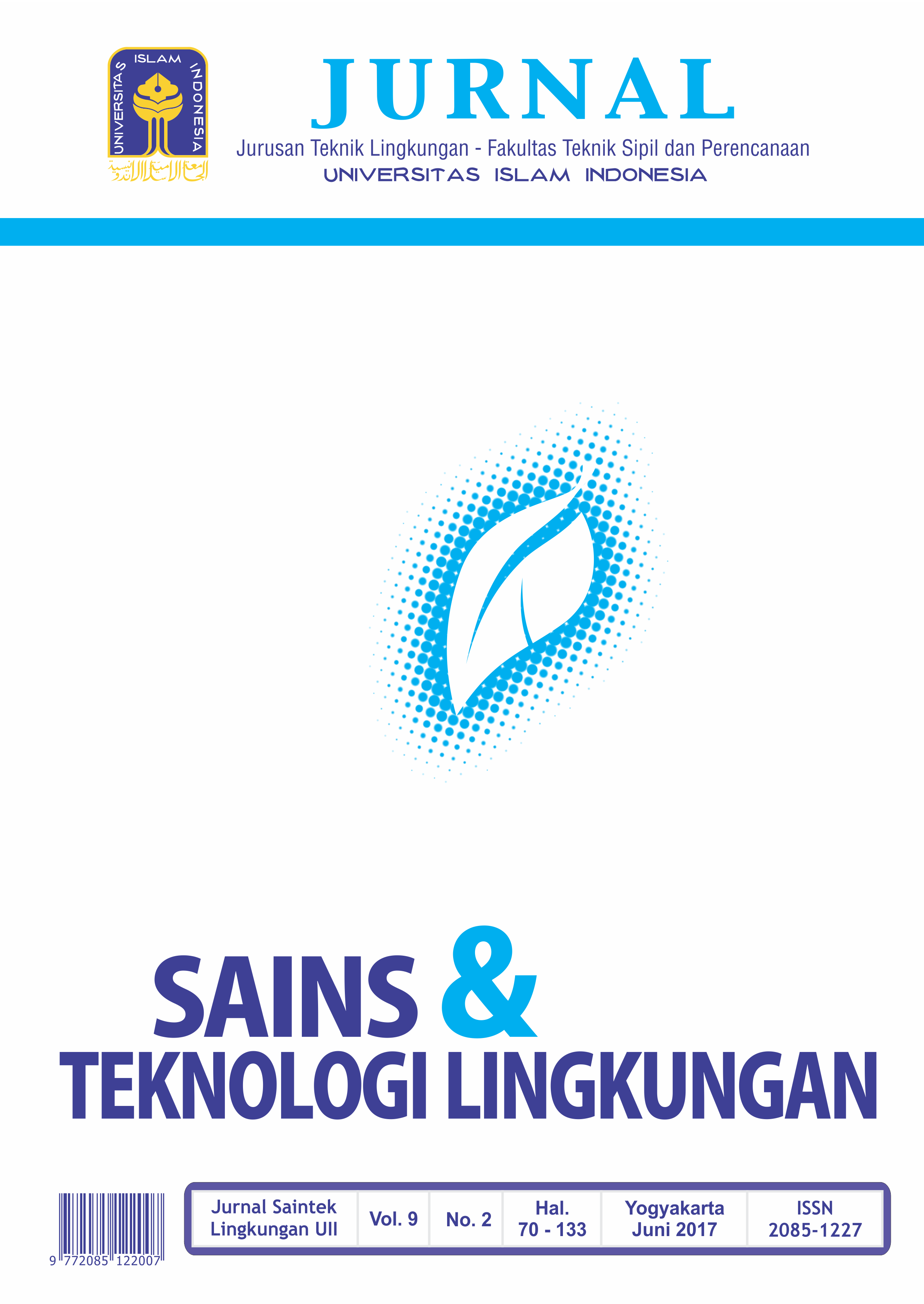Main Article Content
Abstract
Batik industry wastewater is derived from the coloring and wax removal (pelorodan) processes. The treatment for batik wastewater can be made simple and cheap using phytotechnology principle. One of phytotechnology principles is by treating the wastewater using plants as phytotreatment agents which will absorb the pollutants in wastewater. The plants used in this study were Egeria densa and Salvinia molesta and the study used a laboratory-scale reactor in batch systems. The first performed step was acclimatization and then continued by Range Finding Test (RFT). The RFT result would give the value of pollutant’s concentration to be used in the next step of the study, phytoremediation test. Phytoremediation test was conducted for 17 days. The studied parameters were Biochemical Oxygen Demand (BOD) and Chemical Oxygen Demand (COD). The result showed that the single reactor of Egeria densa reached the highest efficiency to reduce BOD and COD from thecoloring wastewater, with the efficiency of 93% for BOD and 95% for COD or equal to 94.4 mg BOD/ L and 392.2 mg COD/L. For wax removal wastewater, the lowest concentrations of BOD and COD were reached in reactor with single species of Salvinia molesta within 17 days which were 99% or equivalent to 1693.1 mg BOD/L and 4338.5 mg COD/L.
Keywords
Batik wastewater
Egeria densa
Phytotreatment
Salvinia molesta
Article Details
License
Authors who publish with this journal agree to the following terms:
- Authors retain copyright and grant the journal right of first publication with the work simultaneously licensed under a Creative Commons Attribution License that allows others to share the work with an acknowledgement of the work's authorship and initial publication in this journal.
- Authors are able to enter into separate, additional contractual arrangements for the non-exclusive distribution of the journal's published version of the work (e.g., post it to an institutional repository or publish it in a book), with an acknowledgement of its initial publication in this journal.
- Authors are permitted and encouraged to post their work online (e.g., in institutional repositories or on their website) prior to and during the submission process, as it can lead to productive exchanges, as well as earlier and greater citation of published work (See The Effect of Open Access).
